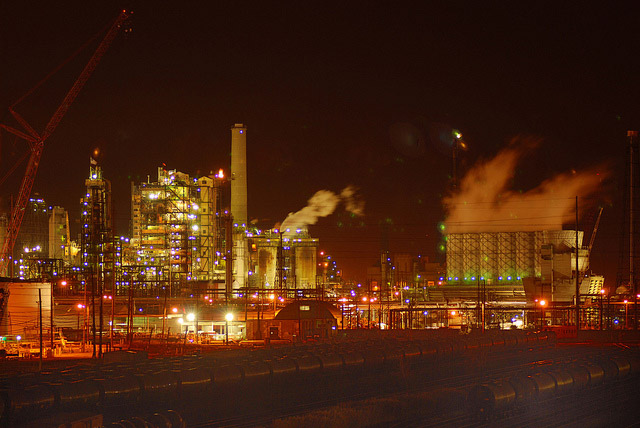Is Lake Michigan An Appropriate Dumping Ground For BP's Brain Poison?
By JoshMogerman in News on Jun 23, 2013 6:00PM
The refinery Chicago loves to hate is in the news again as the Trib’s excellent award-winning environmental reporter Michael Hawthorne digs into water pollution permits floated for BP’s nearby refinery in Whiting, IN. Six years ago, the Chicagoans and Illinois politicians went apeshit upon seeing permits that allowed the refinery to dump large amounts of mercury and ammonia directly into Lake Michigan southeast of the city. In a scathing look at new permits, the Trib shows reports that the State of Indiana would allow BP to continue dumping mercury into the Lake at 20 times the federal limit.
Stung by the previous bad press, BP has been working with scientists from Argonne and Purdue to find new ways to scrub mercury out of their waste stream. But despite trumpeting advances, regulatory documents show that Indiana intends to re-up permits that allow the refinery to continue dumping the powerful neurotoxin at high rates, as the Trib notes:
Under the terms of an earlier decision by the Indiana Department of Environmental Management, the BP refinery can legally discharge an annual average of 23.1 parts per trillion of mercury — nearly 20 times the federal water quality standard for Great Lakes polluters. The proposed new permit would allow that special exemption to continue indefinitely.Area enviros who have long-battled the refinery are wary of slow-walking public protections aimed at keeping brain poisons out of the Great Lakes, especially with deadlines already missed:Though the amount of mercury that BP's treatment plant puts into the lake is small compared with what falls into the water from air pollution, the federal limit of 1.3 parts per trillion reflects decades of research showing that even tiny drops of the brain-damaging metal can contaminate fish and threaten people. The Whiting refinery is among a handful of industrial polluters that still release mercury-laden wastewater into southern Lake Michigan, according to federal records.
In a letter to Indiana regulators, BP said it plans to keep testing the mercury-removal technology and promised to report back by 2015.
"If good intentions were enough to improve water quality, we wouldn't need the Clean Water Act and pollution permits," said Ann Alexander, a senior attorney for the Natural Resources Defense Council. "We don't want a permit that allows BP to just study this technology to death. They need to be using it."BP is close to completing a $4 billion “modernization” of the facility to allow it to refine ever-more dirty and controversial tar sands oil from Canada. That fuel source was part of legal battles over the refinery’s air pollution permits, which ended last year with the company agreeing to add $400 million in additional emissions controls. To deal with the mercury issue in their water pollution, the Trib notes that researchers predict installing the new technology would fall somewhere between $20 and 150 million for the oil giant, which made a $4.2 billion, profit in the first quarter of this year. Given the previous kerfuffle, you can expect to hear plenty more about this issue in the coming months.Indiana gave BP until 2012 to meet the strict federal mercury limit but predicted the refinery would fail to meet the deadline. In late 2011, state regulators exempted the refinery from complying and set its mercury limit at 23.1 parts per trillion, allowing BP to continue legally violating the federal standard.
